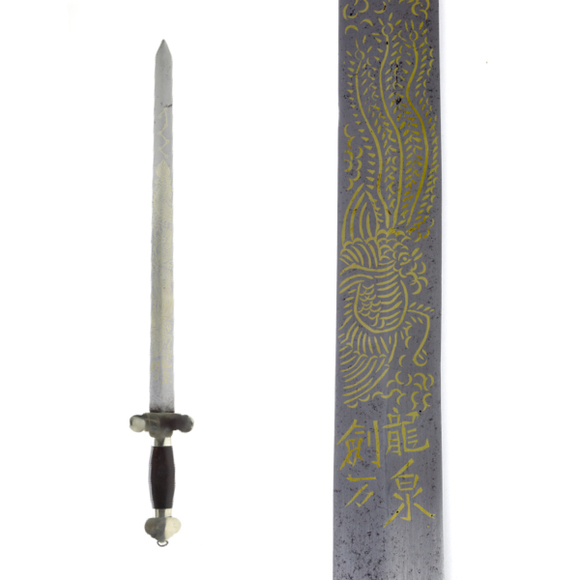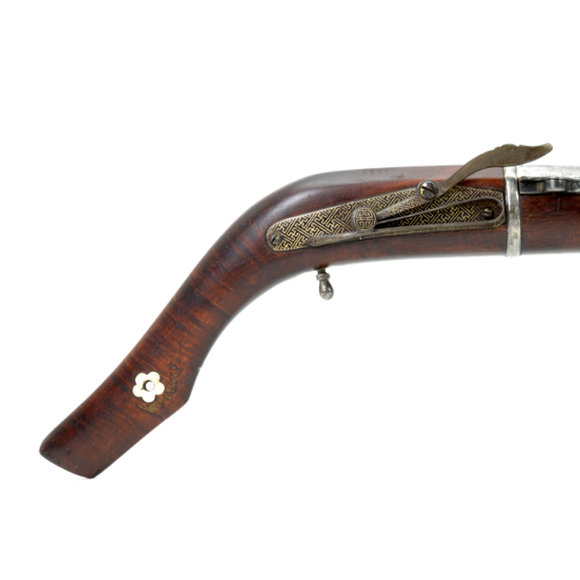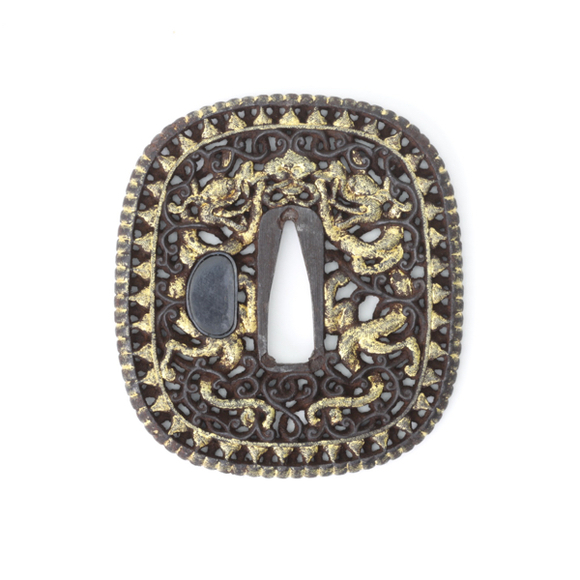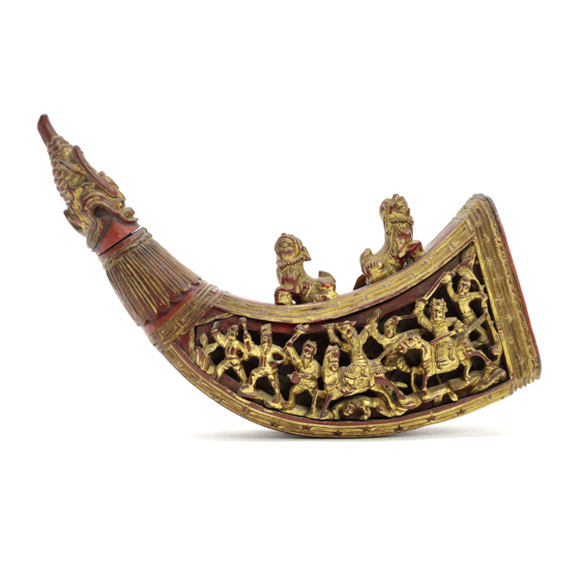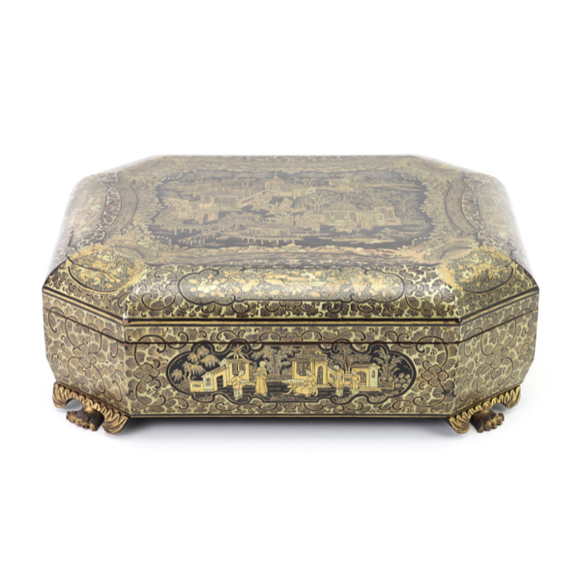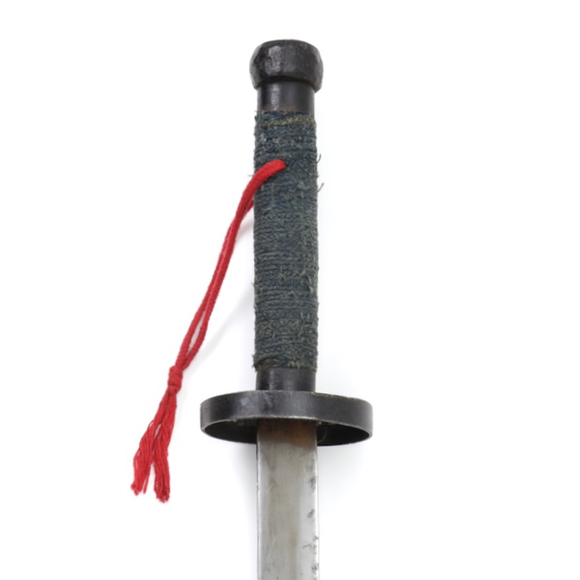A Chinese shortsword made by a well-known Longquan maker.

Sheathed 57.5 cm
Left 56.3 cm
Right 56.3 cm
Left 44.6 cm
Right 44.5 cm
Left 12.5, 8.5, 5.5 mm
Right 13, 9, 5.5 mm
(Base, middle, 5cm from tip)
Left 48, 32.5, 19 mm
Right 49, 33, 19.5 mm
(Base, middle, 5cm from tip)
Sheathed 2032 grams
Left 912 grams
Right 941 grams
Left 9.2 cm from guard
Right 8 cm from guard
Iron, steel, brass, hardwood, leather, textile
Southern China
Circa 1850-1875
From a French collector
Introduction
Húdiédāo (蝴蝶刀), are a type of double swords that originated in or around the port cities of southern China. They are known in the local Cantonese dialect as bat jam do or "eight cutting knives". (八斬刀, pronounced bāzhǎndāo in Mandarin) The type seems to have emerged in the mid 19th century, as a merging of typical Chinese fighting knife blades with handles inspired by western naval sabers and entering knives. They typically have half-hilts that fit in a single scabbard side-by-side and can be drawn as if they were one weapon.
For more information, see my glossary article: Húdiédāo (蝴蝶刀).
This set
Classic pair of Southern Chinese butterfly swords. The substantial blades start off wide and taper to a fairly sharp point. I would consider them the narrow, more lethal variety, but within that range, they are on the wider side. The blades have a strong triangular cross-section, considerably taper in both width and thickness, and the typical back bevel usually present on these. The tips are oblique. Blades are in decent condition. Some patches of now stabilized corrosion and scratches.
Hilts
The hilts feature the characteristic D-shaped guards, this time executed in the stronger iron rather than the usual brass. The ferrules are brass, and with the tang peened over brass washers.
The handles are carved of precious hardwood, with a design of a dragon carved on the right grip, and a phoenix on the left grip, alluding to the forces of Yin and Yang applied in practice. This is rather unusual, normally baskets of flowers of simple geometric patterns are seen.
The designs are bordered with a geometric pattern known as "rolling thunder" that resembles the Greek key of Hellenistic art.

Scabbard
The pigskin scabbard is made out of two pieces, a front that folds around the blades and a separate back. It is reinforced with an extra piece as the scabbard mouth. About two-thirds of the scabbard is wrapped with cord.



















A nice example with unusually fine lacquerwork and a monogram in the lid.
Probably of Southern origin, with a straight blade and flaring tip.

